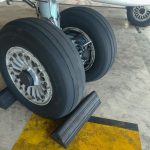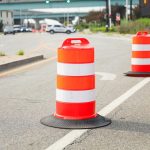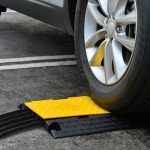Article Outline
- Introduction
- Understanding Speed Bumps and Humps
- What are Speed Bumps and Humps?
- Different Types of Speed Bumps
- The Purpose of Speed Bumps
- Safety Measures
- Traffic Calming
- How Speed Bumps Affect a Car’s Speed
- Vertical Displacement
- Reduced Speed
- Impact on Vehicle Wear and Tear
- Suspension Damage
- Braking System Strain
- Benefits of Speed Bumps
- Pedestrian Safety
- Reduced Accidents
- Concerns About Speed Bumps
- Noise Pollution
- Fuel Efficiency
- The Role of Speed Humps
- Differences from Speed Bumps
- Are Speed Humps More Effective?
- Speed Reduction
- Lesser Wear on Vehicles
- Public Opinion and Feedback
- Community Satisfaction
- Balancing Speed Control
- Global Variations
- Speed Bump Design Worldwide
- Local Implementation
- Best Practices in Speed Bump Installation
- Proper Placement
- Signage and Visibility
- Alternatives to Speed Bumps and Humps
- Speed Cameras
- Smart Road Technology
- Conclusion
- Frequently Asked Questions
How Do Speed Bumps and Humps Affect a Car’s Speed?
When navigating our roadways, we often encounter various traffic calming measures designed to maintain safety and control vehicle speeds. Among these measures are speed bumps and speed humps. In this article, we will explore the dynamics of these road features and delve into their impact on a car’s speed and overall driving experience.
Understanding Speed Bumps and Humps
What are Speed Bumps and Humps?
Speed bumps and speed humps are physical obstacles installed on roadways to reduce vehicle speeds. While they serve a similar purpose, they differ in design and effectiveness.
Speed bumps are typically smaller and more abrupt, resembling small mounds on the road. They force drivers to slow down significantly, often causing a noticeable jolt when passed over. Speed humps, on the other hand, are larger and have a gentler slope. They are designed to slow down traffic while providing a smoother ride for vehicles passing over them.
The Purpose of Speed Bumps
Safety Measures
One of the primary reasons for the installation of speed bumps is safety. They are commonly found near schools, residential areas, and in parking lots, where pedestrian safety is a top priority. Speed bumps encourage drivers to reduce their speed, minimizing the risk of accidents involving pedestrians.
Traffic Calming
Another vital purpose of speed bumps is traffic calming. By discouraging excessive speed, they help reduce the chances of accidents and promote a more orderly flow of traffic in neighborhoods and areas with high pedestrian traffic.
How Speed Bumps Affect a Car’s Speed
Vertical Displacement
Speed bumps are strategically designed to create a vertical displacement in a vehicle’s path. When a car approaches a speed bump, its wheels travel upwards, causing the vehicle to slow down. This vertical displacement leads to a noticeable reduction in speed.
Reduced Speed
The impact of speed bumps on a car’s speed is undeniable. Drivers are forced to slow down significantly as they approach these road obstacles, ensuring safer driving conditions within the area.
Impact on Vehicle Wear and Tear
Suspension Damage
While speed bumps serve their purpose in reducing speed, they can take a toll on a vehicle’s suspension system. Repeated encounters with speed bumps may lead to increased wear and potential damage, necessitating suspension repairs.
Braking System Strain
The constant deceleration and acceleration caused by speed bumps can also strain a vehicle’s braking system. Frequent use of brakes over speed bumps can lead to reduced brake pad life and increased maintenance costs.
Benefits of Speed Bumps
Pedestrian Safety
One of the significant benefits of speed bumps is enhanced pedestrian safety. They ensure that drivers approach pedestrian-heavy areas at safe speeds, reducing the risk of accidents.
Reduced Accidents
Speed bumps contribute to a decrease in traffic accidents, especially in residential zones. By slowing down vehicles, they create a safer environment for both drivers and pedestrians.
Concerns About Speed Bumps
Noise Pollution
Critics often point to the noise generated when vehicles pass over speed bumps. This noise can be disruptive, especially in residential areas, and can affect the quality of life for residents.
Fuel Efficiency
While speed bumps enhance safety, they may reduce fuel efficiency as cars frequently accelerate and brake. This can lead to increased fuel consumption and environmental concerns.
The Role of Speed Humps
Differences from Speed Bumps
Speed humps, while sharing the same objective, are different from speed bumps in design and impact. They offer a smoother ride for vehicles but are equally effective in reducing speed.
Are Speed Humps More Effective?
Speed Reduction
In some cases, speed humps may be considered more effective. They achieve the same goal of speed reduction while being gentler on vehicles, potentially resulting in less wear and tear.
Lesser Wear on Vehicles
Compared to speed bumps, speed humps have a reduced impact on a vehicle’s suspension and braking system. This makes them a preferred choice in certain areas.
Public Opinion and Feedback
Community Satisfaction
The use of speed bumps and speed humps can be a subject of public debate. While they enhance safety, they can also inconvenience drivers. Striking a balance that satisfies both the community and drivers is often a challenge.
Balancing Speed Control
Communities must find a balance between speed control and maintaining an efficient flow of traffic. Public feedback and input are crucial in achieving this equilibrium.
Global Variations
Speed Bump Design Worldwide
Speed bump design varies around the world, with different countries implementing them to suit their specific needs and road conditions.
Local Implementation
Local governments and authorities determine the placement and design of speed bumps, considering local traffic patterns and safety concerns.
Best Practices in Speed Bump Installation
Proper Placement
Proper placement of speed bumps is critical. They should be strategically located to maximize their effectiveness in reducing speed and ensuring safety.
Signage and Visibility
Adequate signage and visibility are essential to alert drivers to the presence of speed bumps, giving them time to adjust their speed accordingly.
Alternatives to Speed Bumps and Humps
Speed Cameras
In some areas, speed cameras are used as an alternative to physical speed bumps. These cameras capture the speed of vehicles and issue citations to those exceeding the speed limit.
Smart Road Technology
Advancements in smart road technology offer innovative solutions to control speed and enhance road safety without the need for physical obstacles.
Conclusion
Speed bumps and speed humps play a crucial role in maintaining road safety and controlling vehicle speeds. While they are effective in reducing speed and preventing accidents, they also raise concerns about noise pollution and wear and tear on vehicles. Striking a balance between safety and driver convenience is a continuous challenge for communities and authorities.
Frequently Asked Questions
- Are speed bumps and speed humps the same?
- No, they serve the same purpose but differ in design and impact on vehicles.
- Do speed bumps damage a car’s suspension?
- Yes, frequent encounters with speed bumps can lead to suspension wear and potential damage.
- What are some alternatives to speed bumps?
- Alternatives include speed cameras and smart road technology.
- How do speed bumps contribute to pedestrian safety?
- Speed bumps force drivers to slow down, reducing the risk of accidents involving pedestrians.
- Are speed bumps a global phenomenon?
- Yes, speed bump design and implementation vary worldwide to suit local needs and conditions.
Visit More Details : Unimat Traffic
1. https://www.reddit.com/r/DarkestPsychology/comments/whw7g1/how_do_speed_bumps_and_humps_affect_a_cars_speed/
2. https://www.reddit.com/r/DarkestPsychology/comments/whwagp/what_are_the_different_types_of_speed_bumps/
3. https://www.reddit.com/r/DarkestPsychology/comments/whwc98/how_can_you_prevent_car_accidents_from_speed_bumps/
4. https://www.reddit.com/r/DarkestPsychology/comments/wiihk0/how_do_these_companies_use_the_heavyduty_economy/
5. https://www.reddit.com/r/DarkestPsychology/comments/wiigi2/what_are_the_benefit_of_heavyduty_economy_speed/
6. https://www.reddit.com/r/DarkestPsychology/comments/wiikcy/what_are_the_heavyduty_economy_single_lane_speed/
7. https://www.reddit.com/r/DarkestPsychology/comments/wiils6/what_are_the_heavyduty_economy_double_lane_speed/
8. https://www.reddit.com/r/DarkestPsychology/comments/wiiodx/what_are_the_unimat_rider_speed_bump/
9. https://www.reddit.com/r/DarkestPsychology/comments/wiiqj6/what_are_the_street_bumps_rider_single_lane_speed/
10. https://www.reddit.com/r/DarkestPsychology/comments/wiis3a/what_are_the_2_modular_unimat_speed_hump/









